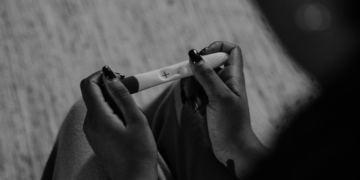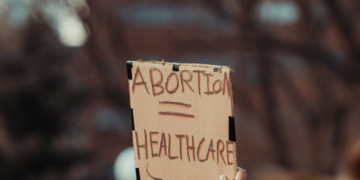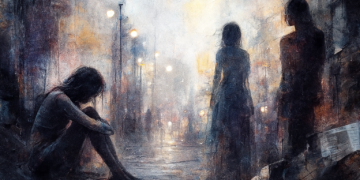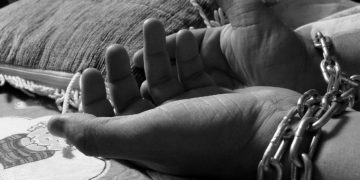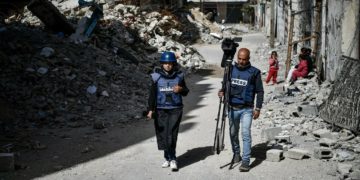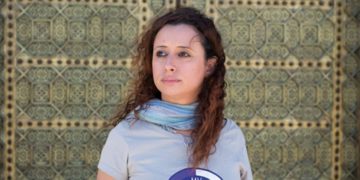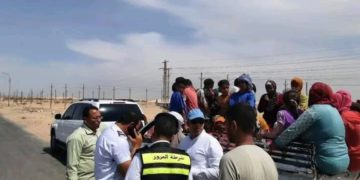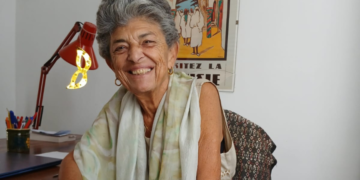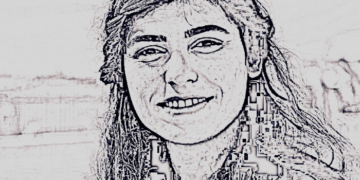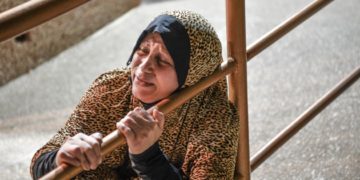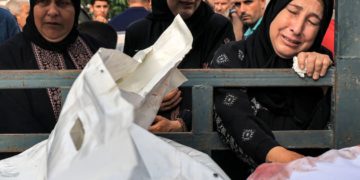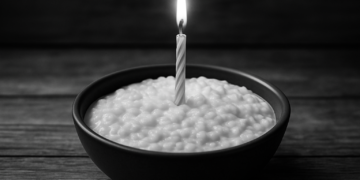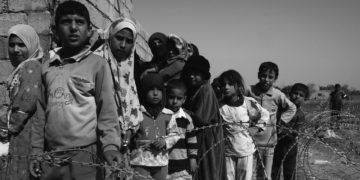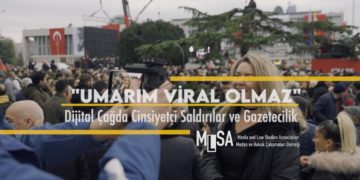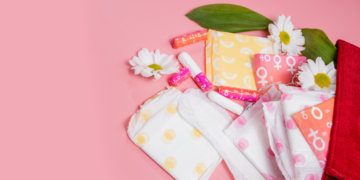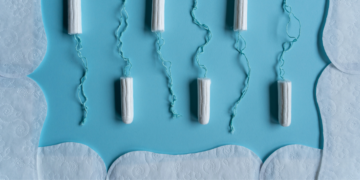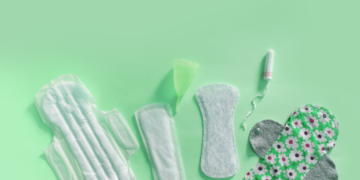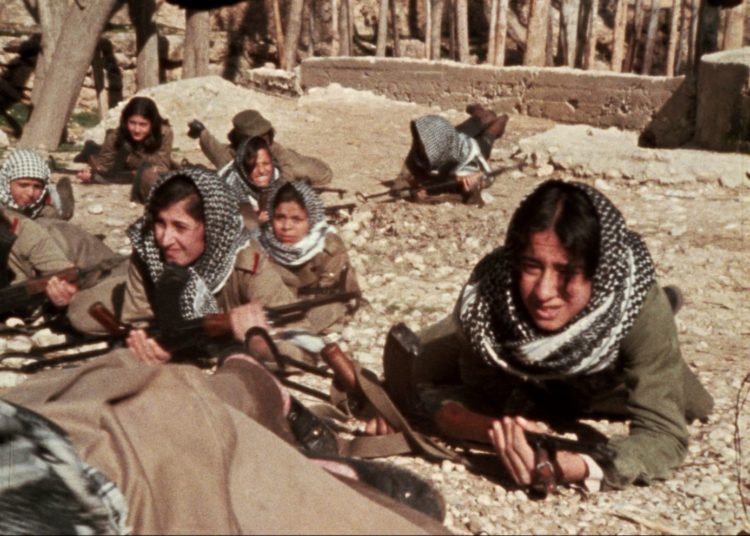This post is also available in: Français (French) العربية (Arabic)
Maha Zaki
“I enter the tent looking for my mirror, my beauty and skincare products, the clothes I used to wear every day, my clean bed where I could lie down at the end of the day. But none of it is there. It’s all under the rubble. I can’t even get my hands on a glass of water to wash my face—I used to have such radiant skin, but now it’s dull and covered with pimples,” says Fatima, a woman from Gaza living in an open-air tent, like thousands of other women. For her, the loss of these everyday objects—as insignificant as they may seem to others—represents the collapse of a former life, one in which she could still hope for some semblance of normality.
From home to life on the street
Israel’s war on Gaza began on October 7, 2023, following a military operation launched by Hamas and Palestinian resistance factions in the Gaza Strip. Israel has indiscriminately targeted and bombed civilians, killing thousands of Palestinians and destroying vital infrastructure such as hospitals, schools, and civilian homes. Almost a year into the war, the number of martyrs in Gaza has surpassed 41,000, with almost 95,000 wounded, the majority of them children and women, according to the Palestinian Central Bureau of Statistics. The war has left behind a desolate landscape, with almost nothing left intact (1).
But for the women of Gaza, the impact is even more tragic: over 90% of them have been forced to leave their homes and take shelter in makeshift camps or shelters. These camps, which are often overcrowded and lacking in sanitation and basic amenities, are unable to meet inhabitants’ basic needs. According to several reports (2), more than 77,000 people have been injured, and around 75% of these are women. An alarming figure that illustrates the disproportionate burden this war places on the female population. In addition, more than 8,000 other people are missing, about half of whom are probably women and children, leaving behind families plunged in endless anguish.

Rola Abou Hashem, a Gaza-based journalist and mother of four, recalls her life before the war. “After years of renting, we managed to buy the house of our dreams. It took hard work and years of deprivation. It had a breathtaking view of the sea. We only got to live there for one year. We had put so much care and love into furnishing every room.”
Reluctantly, the whole family had to leave the house to take refuge with Rola’s father in Rafah, hoping to find some safety there. But no sooner had they arrived than the war caught up with them, completely disrupting their lives. Today, they live in a dilapidated tent, exposed to the elements and all kinds of danger.
“Our days start very early,” she says. “The children can’t sleep in the tents because during the day it’s hot, and at night it’s cold. And we can barely even wash our faces in the tent. Men and women alike start the day by walking long distances in search of water.” As for the tents—when they are available—they are not enough to provide adequate shelter for large families. Some less fortunate residents have to improvise makeshift shelters from scraps of fabric or recovered nylon, trying their utmost to protect their children from the rain, heat, and intrusive glances.
Daily life turned upside down
After their forced displacement, Rola kept asking for news of their home, hoping to return one day. But the news she so dreaded did arrive: their home had been destroyed by Israeli bombardment. “I told myself that money can always be replaced, but the problem is that this was a whole life’s worth of work that just went up in smoke. It cost us our health and that of our children,” she says.
More than 77,000 people have been injured, and around 75% of these are women.
Menstruation, a real challenge
The war has multiplied the challenges women face, particularly during menstruation. Rola recounts how a displaced woman once shyly asked her if she could help her 17-year-old daughter wash after her period, as she hadn’t had access to clean water for days. Though rarely discussed openly, this type of situation is at the heart of the difficulties faced by thousands of women. with more than 690,000 women of reproductive age in Gaza, according to the United Nations (3), the lack of access to basic medical care combined with the absence of appropriate hygiene products exposes hundreds of thousands of girls and women to an increased risk of genital and urinary tract infections—on top of the exploitation and abuse resulting from the shortage of basic necessities in local markets and rising prices. These primarily affect women and girls.
A woman in Gaza—be she single, married, breast-feeding, or having just given birth—faces new challenges every day, challenges compounded by the ravages of war. This suffering adds another layer of pain to their lives, due to the lack of privacy in the crowded shelters. One woman who prefers to remain anonymous shares, “When I’m on my period, I prefer to stay inside the tent for the first few days. I’m afraid there will be blood stains on my clothes; there are no sanitary pads. Women are forced to hide until the first three days of their periods end. But they need to provide food and water for their families.”

Post-partum depression inside a tent
And the situation is far worse for pregnant women and mothers who have given birth during the war. According to a UNICEF report entitled “Born into hell” (4), one eight-month pregnant woman had to run into the street to escape the bombing. Another found herself buried under the rubble. After she was rescued, her baby in her womb didn’t move for a whole week, but the little girl eventually survived.
The report also states that the suffering of mothers doesn’t end there. After giving birth, women need some time to recuperate, but the women of Gaza are forced to cope with physical and psychological difficulties without any support or rest. “This increases the risk of post-partum depression, especially when women have other children to look after. New mothers are thus plunged into a state of permanent anxiety, punctuated by the noise of bombardments, the sight of surrounding destruction, and their inability to breastfeed their infants, their milk drying up due to malnutrition.” As a result, 135,000 children under the age of two are at risk of acute malnutrition.
Rola continues, “I gave birth to my daughter Kinda about two months before the war started, but she wasn’t as lucky as other children around the world. She couldn’t get enough milk because of the food shortages. And formula isn’t always available. I only gave her milk when she was very hungry, and not at usual mealtimes. My children ask me when we’re going home. At first, I used to tell them the noises we were hearing were fireworks, not explosions. But I couldn’t keep up this lie very long. The bombing kept getting louder and louder. We can hear it all the time.”
According to UNICEF (5), there are at least 17,000 children in the Gaza Strip who are unaccompanied or who have been separated from their parents. Before this war, UNICEF estimated that over 500,000 children were already in need of mental health care and psychosocial support. Today, a year into the war, it is estimated that almost all children are in need of those services. Over one million children.
Over 70% of Gaza’s homes have become uninhabitable. Schools, universities, hospitals, mosques, churches, and government buildings have also been destroyed, along with thousands of businesses, banks, infrastructure, and farmland.
Exhausting new tasks for women

Women are also being forced to perform tasks they had never imagined they would have to do. A woman who prefers to remain anonymous confides, “I can’t feel my hands anymore because I have to wash my clothes by hand. There are no washing machines or electricity. So I sleep in my abaya (veil), because I have nothing else. I wash it and put it back on, to be ready for the umpteenth bombing or forced displacement. We seek comfort. In vain. What can we do against the sweltering heat, the skin diseases spreading among our children, the exhaustion of days spent struggling to make meals, collect water, wash clothes, and clean our dusty tents?”
A canvas and nylon tent, for 1,700 shekels (continued)
Amina Majdi (Umm Omar), 33, says, “I live with my children in a tent I bought for 1,700 shekels, or around 450 US dollars—even though these tents are supposed to be distributed free of charge as part of the aid. It cost this much and it doesn’t even protect us from the heat of the sun or the cold of winter, and it’s small. I try to look after my youngest child, who’s one year old—he’s taking his first steps on a rough earth floor instead of the tiled floor at home. My daughters, though they're very young, help me carry water and wood.” According to the Palestinian Central Bureau of Statistics, over 70% of Gaza’s homes have become uninhabitable as a result of Israel’s war since October 7. Schools, universities, hospitals, mosques, churches, and government buildings have also been destroyed, along with thousands of businesses, banks, infrastructure, and farmland. It’s become unlivable. Families are forced to live in tents separated by mere curtains, making it near impossible to find sleep, rest, or privacy.
“As long hope exists, we will live”
In the streets or the tents, the women of Gaza are showing that they are capable of creating hope and life, even in the worst conditions. Many are resisting through personal initiatives, like Amina al-Dahdouh who decided, from her tent in Deir al-Balah, to help children overcome speech problems caused by the war (6). Amina helps those whose lives have been turned upside down and for whom speaking has become a real challenge. “Stammering is the disorder that has increased the most,” she told a United Nations correspondent. “At the moment, I support over 50 children with speech disorders here in the camp. Other children from other camps also want help. I run sessions three days a week and will soon be adding three more for them.”
With their culinary skills, several Gazan women managed to bring a little joy to some children by distributing cakes to 600 families during Eid al-Fitr (7). By mixing flour, semolina, spices, and flavorings, these women managed to add a touch of joy to the holiday with their delicious cakes.
The women and girls of Gaza know that the catastrophe is immense, but they also realize that they can make a difference in the lives of hundreds of people. Walaa Abdel Bari, a young woman volunteering in a humanitarian group founded by ActionAid Palestine, is a case in point. The group aims to build the capacity of young people to respond to disasters and emergencies (8).
Walaa organizes various recreational activities for children to reduce the impact of war on their health and psychological wellbeing. She also acts as a medical educator for some of the medical missions in Gaza and leads fundraising campaigns to buy food, clothing, and winter equipment to distribute to the displaced.
The stories that are coming out of Gaza are heartbreaking. And yet women have managed to keep education alive, even on the streets. Nour Nassar, a volunteer teacher, travels through the camps and destroyed areas with her mobile school, which she carries in a cloth bag (9). She begins her lessons by setting up a small blackboard in one of the tents and displays her famous sign that reads, Mobile School, and As long as hope exists, we will live.
Today, the women of Gaza live, work, raise their children, and face fear in the streets amid the rubble. But they also bring hope to their children and families, embodying in the most exceptional of ways the strength and resilience of women in the face of adversity.
State of Palestine - Palestinian Central Bureau of Statistics
UN experts: Onslaught of violence against women and children in Gaza unacceptable - United Nations - 6/5/2024
Let's talk about the monthly needs of women in Gaza and the support of the United Nations Population Fund - United Nations - 19/2/2024
Born into hell - UNICEF - 19/1/2024
Stories of loss and grief: At least 17,000 children are estimated to be unaccompanied or separated from their parents in the Gaza Strip - UNICEF - 2/2/2024
Gaza, amid war and destruction: a Palestinian woman offers hope to children facing speech impairments - United Nations 16/9/2024
Making Happiness “Eid Cake” - Association al-Fajr
ActionAid International: Gaza women inspire the world with their unparalleled strength in responding to humanitarian catastrophe in Gaza - ActionAid International - 16/3/2024
“Mobile school.” Initiative to teach Gaza’s children in the midst of war - Al-Arabi Al-Jadid website - 6/30/2024
This investigation was carried out with the support of the Tunis Office of the Rosa Luxemburg Foundation.
